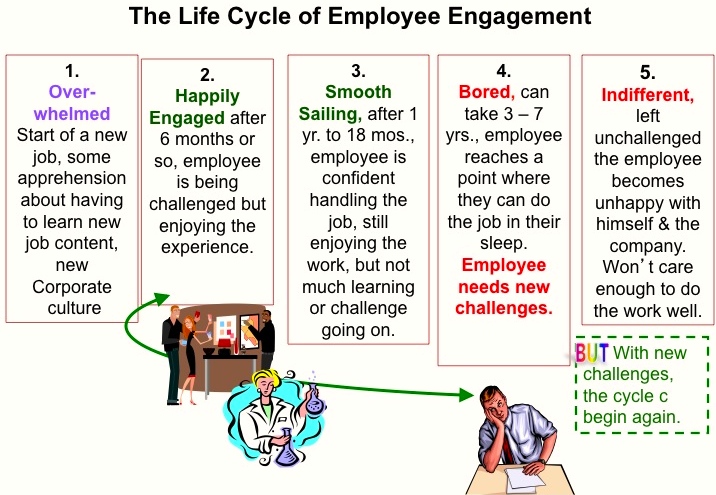DEVELOPING HIGHLY ENGAGED EMPLOYEES STARTS WITH GOOD HIRING, but not every potential STAR interviews well, a little help for them – PART II
- May 23rd, 2020
- Write comment
TIPS FOR GETTING ThROUGH YOUR NEXT INTERVIEW and
FEELING GOOD ABOUT IT ON THE OTHER END
PART II – NOW, ON TO THE INTERVIEW……
These posts will follow
Part III – You ask the questions
Part IV – Finishing up
Quick reminders:
Interviewing by phone is challenging for making the impression you would like to make, but at the very least you want to sound calm and confident. I once read doing a phone interview with a mirror in front of you and with a smile on your face is effective in helping your interview performance – assuming of course, you have prepared well.
“When a smile flashes across your face; dopamine, endorphins and serotonin are all released into your bloodstream, making not only your body relax but also lowering your heart rate and blood pressure.” www.neuronation.com › science › benefits-of-smiling
So…. more relaxed, less stressed + prepared is going to improve your interview performance over the phone and face-to-face.
Of course, you’ll be taking notes during your interview so that you can write a relevant, focused thank you note to the interviewers.
Your Thank You Note will be an important tool for reminding the interviewers about your interview performance (hopefully that’s a good thing) and jog their memories about your qualifications and what you could do for the company and a department.
Some companies ask interviewers to complete a candidate evaluation form immediately following interviews. This is followed by a meeting in which all interviewers will come together to discuss and evaluate the merits of each candidate – excellent practices – unfortunately these practices are not universal, SO… your thank you note may be the only avenue for reinforcing and reminding interviewers what you offer the company.
Don’t forget to collect business cards so that you have correct job titles and accurate email addresses.
A CAUTION on the thank you note: Be careful about offering solutions to problems solely based on a brief interview discussion. Do review your experience and qualifications relative to the job description and the needs mentioned by the interviewers. Broadly touch on issues faced by the company that may have come up in the interview and simply mention your experience in similar situations.
♦______♦_______♦______♦
If you are interviewing for a specific job, have a good understanding of the job responsibilities before your interview so that you are properly focused in presenting your qualifications. You can ask for the job description when your interview is scheduled and for the interview schedule and interviewer’s names and titles. You can get an idea of interviewers’ backgrounds and interests from sites like LinkedIn. As stated previously, get as much information as possible about the company and the department you will be working in. More often than not, interviewers will ask what you know about the company to determine your level of interest in being part of their organization and also your level of diligence in handling important activities.
If the interview is more general, the company is interested in you, but have not defined a specific role, give an overview of your experience, but do get in questions about the company’s structure/reporting relationships, recent successes, challenges, and plans and similar information about the department(s) that you may be interested in. This information will help you to make links between your background and the company’s needs.
The following interview suggestions will assume that you are dealing with practiced interviewers who are asking good behavioral interview questions and allowing you to detail your skills and experience to do the job for which you are being interviewed. I’ve included a technique*, below, to use in the event that this is not the case.
If you are dealing with a poor interviewer, * you will have to drive the interview by interjecting, at opportune times, your accomplishments specific to the job for which you are being interviewed.
Look for these signs of a poor interviewer.
A poor interviewer will….
> do most of the talking,
> be a poor listener,
> ask few, if any questions that link your skills and experience to the job requirements, or the company’s broader needs.
Preparing For & Responding To Questions
Remember the STAR model described previously. Whenever you respond to a question or relate an accomplishment, be sure to include the components of the STAR model. See Part I, Preparing for the Interview
Understand the Focus of each Interviewer
You will likely interview with people who have different focus in interviewing you, for example:
- Some will be very focused on your qualification to do a specific job, your work and collaborative style. These will be people with whom you will work closely, the hiring manager and the like and people from other departments who will be dependent on the quality of your work.
- Some interviewers are talking with you to support the decision of the hiring manager – to pickup on any glaring gaps in capability or mismatches with the company’s culture.
It is important for you to pick up on the interviewer’s focus and what they want to know and how much they want to know rather than just rambling on about something they aren’t interested in. Listen carefully for cues in the type of questions they ask and notice when they loose interest in the detail you are giving them, i.e. provide focused answers – give them what they want. You can also ask “would you like to hear about…..OR would you like to hear more about………these questions help you provide the information they want.
Practice giving concise and clear responses and then asking –
- Shall I give you more detail about that?
- Would you like me to explain further?
Don’t be afraid of silence between the question and your answer. It is important to think about how you would like to answer a question. If silence feels uncomfortable to you and you usually feel as though you must jump in with an answer, simply say, “Let me think about that.” It’s calming and these words will actually help you to focus.
Keep in mind these important objectives of any job interview
1) Present your credentials to successfully do the job for which the company is recruiting and be sure your interest in the company and the job is apparent.
Note: A company’s primary objective during interviewing is finding a qualified person who will contribute to their success, so focus your remarks and responses accordingly.
Comments about how much the job will benefit your career – what the company will do for you – are not going to benefit your candidacy. Once the company’s primary needs and goals are being met, they will be/should be interested in seeing that your career and other needs are met as well.
2) Convince the interviewers that in addition to being “qualified,” you are someone who will be successful in that job – in that company, and someone they could work with.
This piece is about establishing rapport with each interviewer (or most interviewers) – the ability to have a productive conversational exchange. See Mirroring, below.
Sales people learn to do something called “Mirroring” to establish rapport in order to build relationships that will lead to making sales. In an interview you are selling your ability to do a job within a specific environment.
“Mirroring” involves adapting your communication style to the interviewer’s style. This is also called “Flexing” your style. This is very easy to do, once you are aware of this concept, you will start to notice the communications styles of others in interviews and other social situations.
Is the interviewer?
- Concise and to the point in expressing themselves, do they speak in “clipped” sentences, are they reserved in their movements and gesturing
- Fast talking, but detailed and given to sweeping gestures, personable.
- Very precise in capturing every detail of what they want to say to you, do they talk very slowly, and are they very reserved in their movements.
- Somewhere in-between.
If you respond to interviewer #1 with long wordy sentences, expressing yourself in great detail and with emotion and gesturing, you will not establish rapport with this person.
If you respond to interviewer #2 by talking very slowly and behaving in a reserved manner, you will not establish rapport with this person.
You get the idea……
When the interviewers sit down to evaluate candidates there might be comments like, “I really found it difficult to talk to this person.”
Just think about conversations you’ve had or observed where the styles are off as I’ve described. These two people will find it difficult to really communicate. They might avoid seeking each other out for important discussions – they will likely not work well together, unless **
**Some companies invest in programs that educate employees to understand and appreciate the contributions of different personality types and styles and the accompanying differences in communication styles. Such awareness training can improve overall communications and cooperation in an organization. However, this type of awareness training is not universal and awareness doesn’t have the desired effect on everyone.
Another thought on the person you may perceive as a “poor interviewer” – you feel you aren’t being asked questions that allow you to present your credentials or accomplishments or you don’t feel you are being given the opportunity to give full detail. CONSIDER – that particular interviewer may be getting all THEY want or need, confirm that by asking these simple questions,
-
-
-
-
- “Shall I give you more detail about that?”
- “Would you like me to explain further?”
- “Would you like to hear about……?”
-
-
-
Questions about your previous employer Or How did you come to be in a job search?
It is amazing how many people think it’s OK to bad-mouth their previous employer or manager. IT NEVER IS.
Practice your answer to these types of questions with the understanding of how your response is coming across to the interviewer who probably knows very little about either your previous company or your boss, but is trying to figure out if they want to work with you.
Keep your answer simple, for example, “following the recent acquisition of my company, my job was eliminated.” Best to avoid elaborate explanations.
Talk about self-incrimination!
What do you consider your greatest professional weakness?
If you find this questions off-putting, you are not alone and you are probably very uncomfortable answering it. Ignoring it isn’t really an option.
So turn it into a positive about yourself – Maybe you’ve done one of the many personality or work style evaluations and you can state this, “I’m quite self-aware as a result of having done several personality and work style evaluations. One area that I work on improving is………..and I have been quite successful.” Have an example of where you have seen improvement in case the interviewer asks. Most interviewers will move on after you have given this type of answer.
One last thing to consider regarding your interview performance
If you were making a hire, would you choose someone who seemed qualified but showed little enthusiasm for their job related accomplishments which they’ve shared with you, or marginal interest and enthusiasm for your company and the job for which they are interviewing?
Interest level and enthusiasm are always factors graded on the candidate evaluation forms I’ve created and used. These aspects of a candidate’s behavior are always factors in the hiring decision.
Next Post:
PART III
NOW YOU NEED TO ASK SOME QUESTIONS & GET INFORMATION
Previous Post:
PART I

 Follow
Follow










